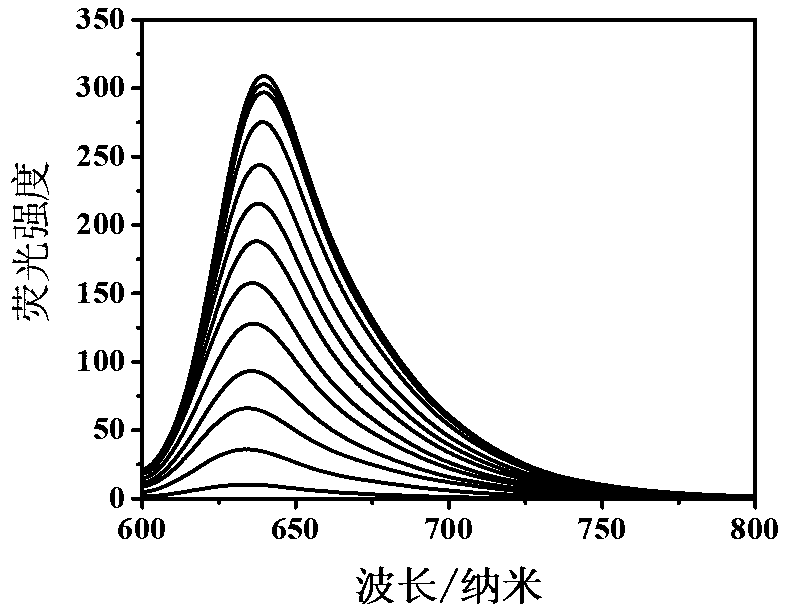Fluorescent probe with near-infrared specificity for detecting cysteine
A technology of cysteine and fluorescent probes, applied in the field of fluorescent probes, can solve the problems of inability to distinguish cysteine and homocysteine, etc., achieve strong tissue penetration, less damage to biological tissues, and eliminate Effect of tissue fluorescence background interference
- Summary
- Abstract
- Description
- Claims
- Application Information
AI Technical Summary
Problems solved by technology
Method used
Image
Examples
Embodiment 1
[0024] Synthesis of Compound I
[0025] (5) Under nitrogen protection and ice bath conditions, compound II was dissolved in anhydrous dichloromethane, then acryloyl chloride was added, and triethylamine was added dropwise into the reaction system. Stir overnight at room temperature. The crude product was obtained, which was purified by column chromatography to obtain red compound I. figure 1 is the NMR image of the probe.
Embodiment 2
[0026] Embodiment 2 Probe compound I selectivity analysis
[0027] Add 10 μM of compound I to the DMSO / PBS buffer containing cysteine (the concentration of cysteine is 200 μM, pH = 7.4, DMSO:PBS buffer with a volume ratio of 1:4), and the detection results are as follows: figure 2 , when the excitation light wavelength is 580nm, the probe compound I has a strong fluorescence response to cysteine at 645 nm, and the probe compound I has no obvious response to other biological thiols, indicating that the probe compound I has a strong fluorescence response to cysteine Amino acids have excellent selectivity.
Embodiment 3
[0028] Example 3 Analysis of the response of probe compound I to changes in cysteine concentration and a working curve for quantitative detection
[0029] Add 10 μM probe compound I to the buffer containing different concentrations of cysteine (0 - 200 μM), the fluorescence response intensity increases regularly with the increase of the amount of cysteine added, and the detection results are as follows: image 3 , the results show that the probe compound I has a wider detection range and higher sensitivity to cysteine concentration. By plotting the concentration of cysteine against the corresponding fluorescence value, a better linear working curve can be obtained, which can be used for the quantitative detection of cysteine.
PUM
 Login to View More
Login to View More Abstract
Description
Claims
Application Information
 Login to View More
Login to View More - R&D
- Intellectual Property
- Life Sciences
- Materials
- Tech Scout
- Unparalleled Data Quality
- Higher Quality Content
- 60% Fewer Hallucinations
Browse by: Latest US Patents, China's latest patents, Technical Efficacy Thesaurus, Application Domain, Technology Topic, Popular Technical Reports.
© 2025 PatSnap. All rights reserved.Legal|Privacy policy|Modern Slavery Act Transparency Statement|Sitemap|About US| Contact US: help@patsnap.com



